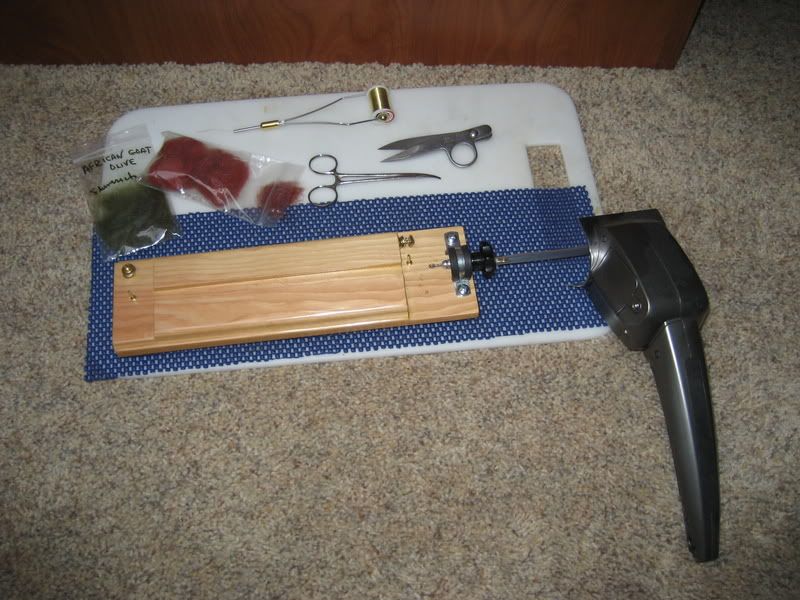I thought I would share some photos of my version of a motorized dubbing brush twister. With the exception of the motor, I built it out of scap materials I had hanging around the garage. The motor is actually a Foredom grinder that I picked up for next to nothing from Craig's list. The motor part of the twister that you see in the second photo is just the hand piece. The actual motor hangs on the out side of my tying desk. The "tray that holds the dubbing material is a 1 inch strip I cut from a piece of 3 inch diameter schedule 40 PVC pipe. I mounted pieces of steel to the bottom of the PVC pipe that slip into holes in the base of the twister. It makes dubbing brushes a full 12 inches long which allow me to get 4 - 6 flies out of a dubbing brush.
I used a cam system to allow me to raise and lower the dubbing tray. This allows me to drop the tray out of the way when I twist the dubbing brush, give me a nice full 360 degree brush. To raise the tray, I simply rotate the knob to the right while rotating it to the left drops the tray back down.
The chuck on the hand piece allows me to change the dubbing brush hook for a heavy uppolstry needle. This allows me to also use this as a "dremel bug" station where I can make popper heads etc. out of flip flop foam.
Just thought I share.
p.s. In case any of you folks that don't feel the need for a motorized dubbing twister, this leaves me with a like new "manual dubbing brush twister" that I'll sell for $25.00 plus actual shipping. Let me know if your interested.
Jim Smith








 Reply With Quote
Reply With Quote
